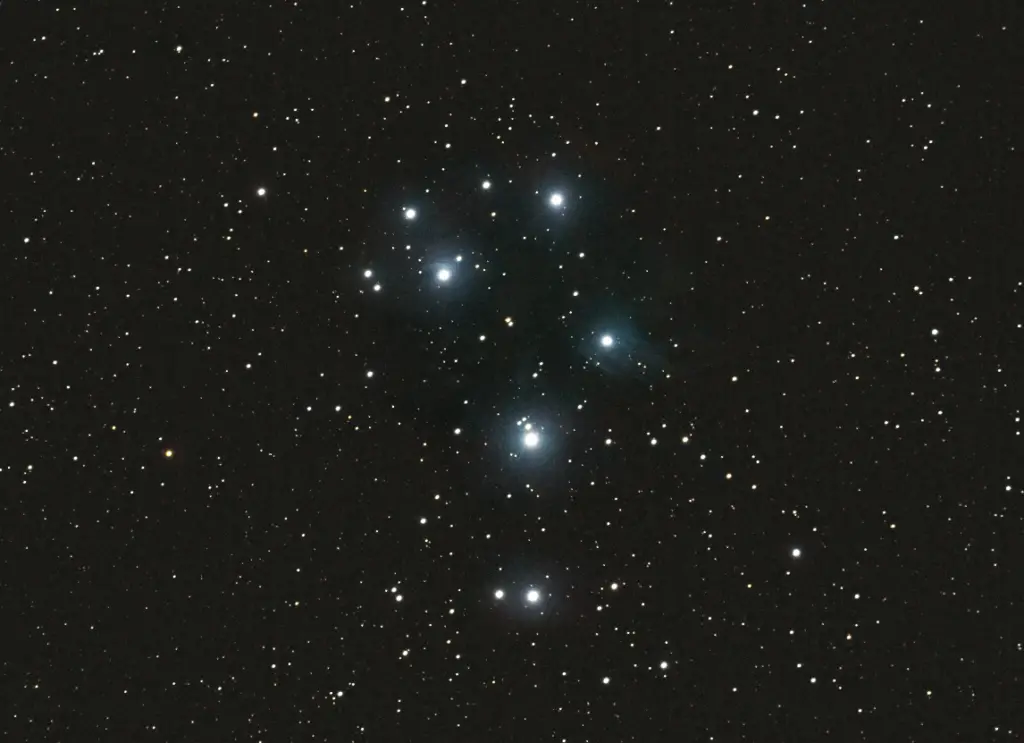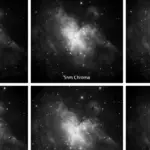In this article we’ll find out what you can expect to see through binoculars, discuss their pros and cons, and look at some different types of binoculars for stargazing.
Experienced astronomers often recommend them to newcomers in lieu of a cheap telescope. There are several reasons for this:
- Binoculars Are Simple
- Portable
- Cost-Effective
- Require Few Or No Additional Accessories
Binoculars are useful but underappreciated tools for amateur astronomy, and they can get you started observing very quickly. They can be a great tool to get started in astronomy.
What Makes Binoculars Good for Stargazing?
Binoculars collect far more light than your naked eyes, meaning they can see more stars and deep-sky objects.
They also have a wider field of view than your typical telescope, so you can see more of the sky than with a telescope. This can help you start to identify constellations, planets and other objects.
Stargazing with binoculars can be a relaxing experience. Lying back on a lawn chair, you can scan the Milky Way searching for clusters and nebulae.
From a dark site, you might be amazed at how much more you can see with a simple pair of birdwatching binocs.
On the minus side, binoculars lack any sort of finder, so it can be difficult to orient yourself and determine exactly where you are looking in the sky.
They are also not well-suited to viewing compact objects like planets and binary stars, though there are certain exceptions. Like most things in astronomy, it takes some practice. ‘
Also, they can be difficult and tiring to hold steady, especially at larger apertures.
If you are interested in purchasing some binoculars you can see our recommendations at the end of the article.
Which are the Best Targets for Binoculars?
There are several objects which are best viewed with a wide field, like binoculars.
M45 (The Pleiades)
Also called the Seven Sisters, this brilliant open cluster is an eye-catching sight even to the naked eye, appearing as a bright, hazy patch of stars.
Through binoculars, this patch bursts into a shower of bright sparks, glowing over a bed of fainter stars. The arrangement of its seven brightest members leads some to confuse it with the Little Dipper in Ursa Minor, but they are completely unrelated.

M31 (Andromeda Galaxy)
M31 is a huge object: at around six times the width of the full moon, it is too large for the average telescope. Binoculars, however, have no issue seeing its full extent.
Though it won’t look nearly as detailed as in a long-exposure photograph, from a dark site you can still see its bright core and the ghostly impression of its spiral arms and dust lanes.
Even from my suburban yard (Bortle 6/7), its core looks impressive, and I can glimpse a hint of the outlying regions of the great galaxy. You can look up your Bortle score at this website.
Galactic core in Sagittarius
Though it rides close to the horizon from my latitude, this region of the sky is still one of my favorites.
In addition to being an incredibly rich part of the Milky Way, it is also jam packed with deep-sky gems. You can start with M24, the Sagittarius Star Cloud, before moving on to see M22, M8, M20, M17, and more. While most of these objects will look like little more than fuzzy blobs through binoculars, there is still a certain thrill of seeing so many of them in the same field of view.

NGC7000 (North America Nebula)
The Northern Cross of Cygnus is one of the finest areas to sweep with binoculars. It virtually explodes with stars, riven by dark nebulae, and off the tip of the Cross you can find NGC7000.
This large, nebulous patch of star-forming hydrogen appears red in photos, but through binoculars it is a faint, glowing patch amidst rich starfields. Once again, dark skies are highly recommended.
Orion Nebula (M42)
This magnificent object is impressive at any magnification.
Though a telescope is required to see its exquisite detail, my 8×42 roof prism binoculars reveal a compact cluster of stars embedded in nebulosity. Moving up to my 15×70 Skymasters, the nebula blossoms into a greenish-gray celestial flower.
Types of Binoculars
There are many types of binoculars on the market, only some of which are well-suited to astronomy.
Still, there is no harm in trying out whatever pair you happen to own, or picking up an affordable pair second hand.
Binoculars are rated as follows:
magnification x objective lens diameter.
A larger set of objectives will provide brighter images, but will be heavier and more expensive.
Higher magnification might seem desirable for astronomy, but anything over 12x becomes difficult to hold steady and may require a tripod.

Pocket-sized binocs
These usually come in 7-10x magnification, with objective lenses typically between 20 and 30mm.
These are compact, lightweight, and are usually less expensive than full-sized models, but their limited light grasp and narrow fields of view make them less than ideal for stargazing.
Orion sells a pair you can find here, or this pair from Amazon also falls in this category.
“Standard” binocs
Typically sold in configurations like 8×42 or 7×50, these classic all-purpose nature binoculars provide an optimal balance between compactness, light grasp, and field of view.
Orion has a pair that is designed for astronomers, they are affordable and lightweight.
Astro binocs
With objectives over 60mm and magnifications exceeding 10x, these models are purpose-built for astronomy. Note that a tripod may be required.
These binoculars from High Point Scientific require a tripod and that increases the cost significantly.
Giant binocs
Basically a pair of telescopes, these specialized instruments are uncommon and usually quite expensive.
High Point Scientific sells a pair of Giant Binoculars if you are interested to see the specifications.
Image-stabilized (IS) binocs
Many experienced astronomers swear by their IS binoculars. Though they have smaller objective lenses than standard astronomy binoculars, their image stabilization technology allows for sharper, more detailed views.
They are, however, bulkier and more expensive than comparable non-IS models. The Porro Prism pair pictured above can be found at Orion.
Binoviewers
This accessory converts your telescope into a giant binocular, creating a more immersive, almost 3D experience. You will require at least one set of identical eyepieces to use it.
What to look for when buying binoculars
When you are looking at binoculars you should consider a few things; the type of prism, the optical coating, weatherproofing, magnification, field of view and eye relief.
Each of these things affects the price and performance of your binoculars.
Type of prism
Astronomy binoculars usually employ porro prisms, which are less expensive to produce and often provide brighter images with a wider field of view. However, if size and weight are a concern, you may want to invest in good-quality roof prism binoculars instead, which have a more compact, streamlined design.
The type of glass is also important. Images from BAK-4 prisms will be brighter and sharper to the edge of the field when compared with the less expensive BK7 prisms.
Optical coatings
Fully-multicoated optics will provide the best contrast with reduced glare and internal reflections compared to just coated or multicoated optics.
Weatherproofing
It is practically a given that astronomy equipment will get wet at some point, usually due to dew or frost. Water resistance can help prolong the life of your purchase.
Magnification and field of view
There is a trade-off here: Higher magnification will give you more satisfying views of many objects, but at the cost of a narrower FOV. This means your binoculars will be harder to aim and more prone to shakes.
Eye relief
If you wear glasses to observe, a long eye relief (>15mm) is essential. Beyond that, it is a matter of preference. I find eyepieces with long eye relief more immersive to look through and place this high on my priority list.
Weight
Many things contribute to the weight of your binoculars, but heavier binoculars will be more difficult to hold steady and you may get tired after a short time of observing.
I have enjoyed using heavier binoculars while reclining on my car or in a stable chair.
So, while there are a lot of things to consider, there are good options available at different price points.





